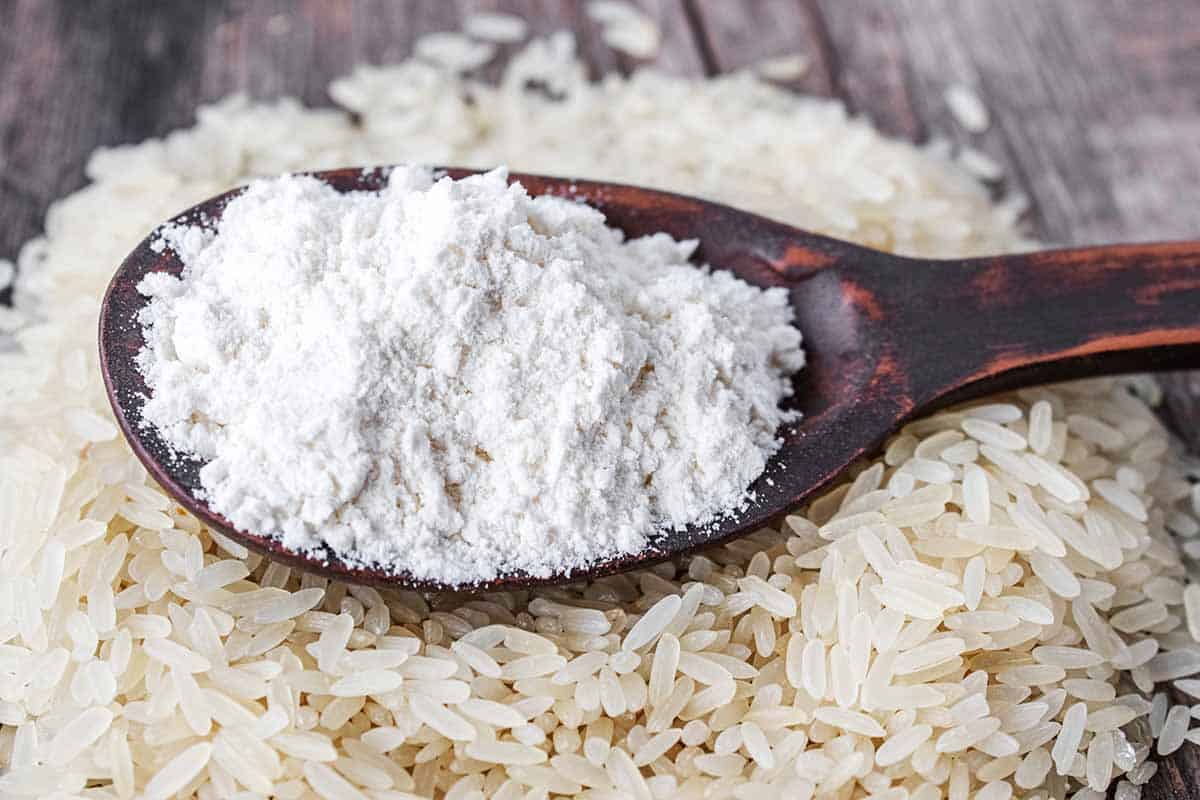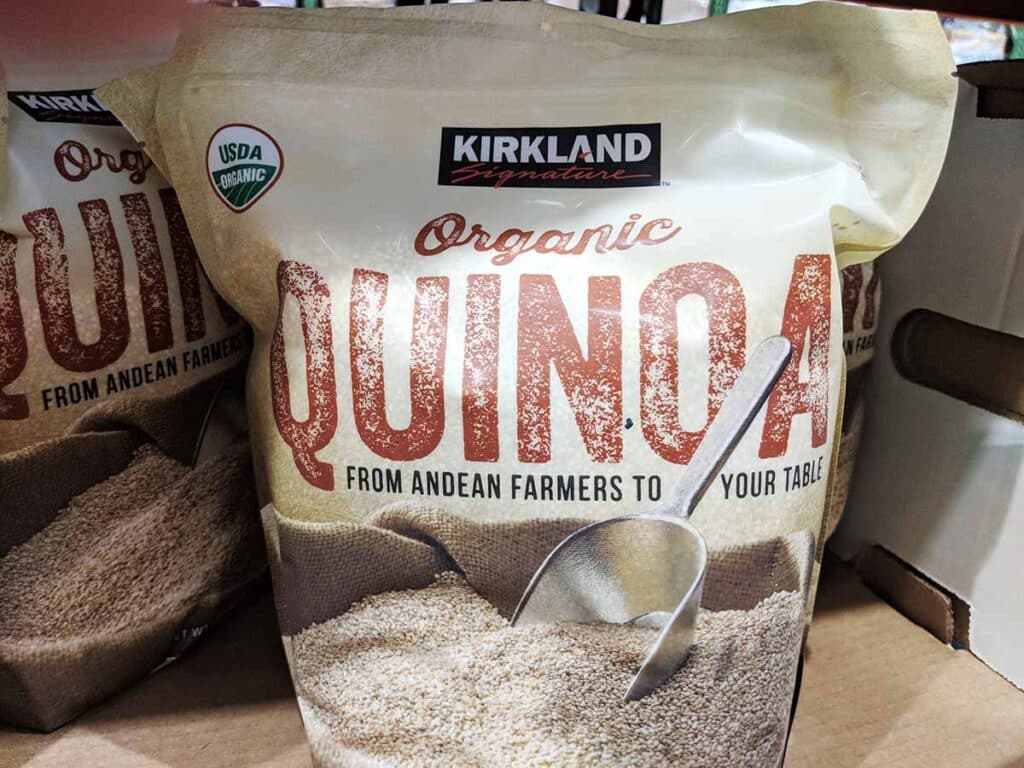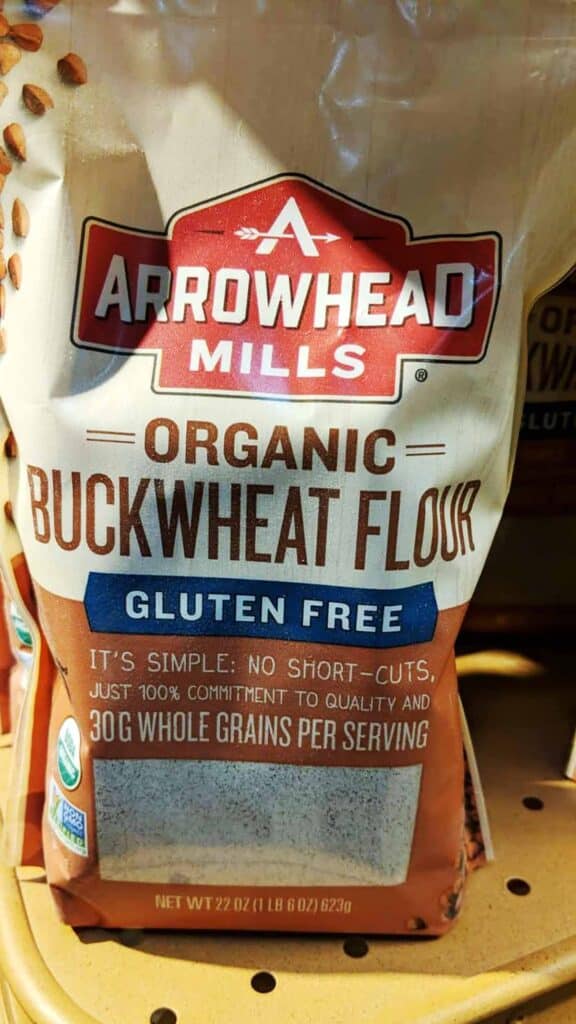Uncover the best substitute for rice flour in this article. Whether you’re gluten-free or looking to add new flavors and textures to your recipes, we’ve got you covered!
If you love baking, you have most likely already come across rice flour. Renowned for its versatility and compatibility with various recipes, rice flour is an excellent thickening agent and a staple in many gluten-free kitchens.

Rice flour is a type of flour that uses ground rice grains.
It is a staple in many kitchens, especially in Asian countries where rice is a major crop. Rice flour is also a staple as well as in gluten-free kitchens.
Making rice flour involves grinding whole rice kernels or broken rice grains into fine powder. The resulting flour can have various textures, ranging from fine to coarse. It all depends on the type of rice used and the milling process.
There are also different types of rice flour according to rice variety. You might come across white rice flour, brown rice flour, sweet rice flour, and glutinous rice flour (also known as sticky rice flour).
Each type of rice flour offers distinct characteristics and is useful for specific culinary purposes.
White rice flour has a smooth texture and a slightly sweet flavor. People commonly use it in baking and cooking, often as a thickening agent.
Brown rice flour has a somewhat nutty flavor and is more nutritious than white rice flour. However, you can use it similarly to white rice flour.
Lastly, glutinous rice flour becomes sticky when you cook it. It is popular in Asian cooking for desserts and dumplings.
Rice flour is a top choice for those with gluten intolerance. After all, it is naturally gluten-free. It is also a versatile ingredient in baking.
You can use it to make bread, cakes, cookies, and various other treats. Its neutral taste allows it to blend well with other ingredients, making it valuable in many recipes.
Whether you’re out of rice flour or want an overall alternative to the ingredient, you have many options to replace it with.
Depending on the kind of dish that you want to make, some substitutes may even bring a better flavor or appeal to your recipe.
Here is the list of the best substitute for rice flour.

If being gluten-free is not a big deal for your ingredient, then there’s really no match for all-purpose flour. It’s the most versatile and a very good rice flour substitute.
You can use all-purpose flour for any recipe you can think of. Whether baking, frying, noodle making, or even thickening, all-purpose flour can do the job.
When it comes to thickening, you must cook your flour with some fat before using it. Otherwise, you may have an unpleasant floury taste and grainy texture.
Tips:
Since this is one of the best substitutes, using all-purpose flour in a 1:1 ratio is a safe choice.
Chickpea flour or garbanzo flour is a great rice flour replacement. After all, it is gluten-free, too. If you’re particular about that, this is one of the swaps you can use.
Chickpea flour is best for flatbreads like pizza crusts and tortillas.
However, it’s important to note that this flour is not flavorless like rice flour. It has a strong and distinct earthy taste, making it great for Middle Eastern and Indian dishes.
In addition to its distinct flavor, chickpea flour also has a coarse texture.
While this texture may only bode well with some recipes, it is a good choice if you want to change the consistency of a dish.
Tips:
Generally, you can use chickpea flour in a 1:1 ratio when substituting rice flour. However, as mentioned above, there are considerations to think of, such as the flavor.
If you’re not fond of its distinct flavor, it’s best to start with a lesser amount. Chickpea flour is highly absorbent, so account for that when making your dish.
When baking, millet flour is among your best options as a rice flour substitute. It can help create a nice cake-like texture to baked goods.
However, millet flour has a slightly nutty flavor that can be evident in some recipes.
It’s best to pair it with another flour to keep your dish from tasting too different from the original.
Tips:
Replace rice flour with millet flour in a 1:1 ratio.
For the best results, use millet flour for recipes that call for brown rice flour. These two flours share a close flavor profile.

Another great alternative to rice flour is quinoa flour. Quinoa flour is the result of grinding quinoa flakes. It has a similar texture to brown rice, so people use these two flours interchangeably.
The good thing about this flour is that it is similarly gluten-free, but it is even more nutritious than brown rice flour. If you want to boost your dish’s health benefits, then quinoa flour is your best bet.
One disadvantage of using this flour is that it is more expensive than rice flour. If you are on a tight budget, there are better alternatives than this flour.
Tips:
If the recipe calls for brown rice flour, you can use quinoa flour in a 1:1 ratio.
You may need to increase the amount of liquids in your recipe. This flour is denser than rice flour, after all.

Almond flour is an amazing swap for rice flour that works especially great in sweet baked goods and fried dishes.
It has a slightly nutty flavor and a coarse texture, which adds to its appeal when you use it for baking.
Aside from being gluten-free, almond flour is also grain-free and paleo-friendly.
This nut flour might be your new favorite if you have a particularly strict diet.
However, you must prepare yourself for a change in texture. Your final dish might be heavier compared to when you use rice flour.
Tips:
You can follow a 1:1 ratio when replacing rice flour with almond flour.
It’s important to note that almond flour burns quicker at high temperatures. Keep the temperature down, especially when you’re using it for frying.
Another gluten-free option for a rice flour substitute is tapioca flour.
Tapioca flour or starch comes from the cassava root. You may be familiar with this ingredient as it is popular for its use in the black pearls you see in boba.
This type of flour has a fine texture similar to rice flour. Note that tapioca can be sweeter, so it does not taste alike. Still, it does a decent job in frying, baking, and thickening.
To complement its slightly sweet taste, use tapioca flour in sweet recipes like pie fillings and desserts.
Tips:
When using tapioca flour as a rice flour substitute, follow a 2:1 ratio. That is, replace each cup of rice flour with 2 cups of tapioca flour.

Although sorghum flour may not be readily available in many kitchens, it is one of the best rice flour substitutes.
This flour is a staple in gluten-free kitchens as it is among the most popular alternatives for all-purpose flour.
Sorghum flour has a mild, slightly bitter taste, which makes it a better match for savory dishes and bread. Although this taste resembles rice flour, it can be a little stronger.
It can easily overpower your recipe, especially when you use it in frying.
In other applications, though, it takes on the other flavors in the dish.
Tips:
If you plan to use sorghum flour for frying, start by using half the amount you would use of rice flour and work your way up.
In any other dish, you can easily substitute the same amount of sorghum flour for rice flour.

People make coconut flour by drying and finely grinding coconut flesh. It is another option for a rice flour substitute, especially for baking and frying.
It has a strong flavor that can affect the recipe.
Coconut flour is gluten-free, grain-free, and paleo-friendly, suitable for people who follow strict diets.
Tips:
For every cup of rice flour you need, use ½ cup of coconut flour.
Coconut flour has a fine texture and is very absorbent. If you plan to use it, be ready to add more liquid – water or milk – to your recipe to avoid getting dry dishes.
Potato starch is a type of flour that people extract from crushed potatoes. It is another gluten-free option that can replace rice flour.
Potato starch is perfect for thickening and deep-frying.
Do note that this ingredient is not absorbent as other options on this list. This characteristic can be both an advantage and a disadvantage.
For instance, when you use it for frying, potato starch will help create a light and crispy exterior because it won’t absorb oil too much.
On the other hand, if you’re using it for a dish with many seasonings, it won’t do a great job. After all, it won’t take in the flavors in your spices.
Tips:
You can follow a 1:1 ratio when using potato starch as a rice flour substitute.
When you use it as a thickener, it’s best not to simmer or boil potato starch for extended periods. Otherwise, it will break down and lose its thickening power.
As the name suggests, oat flour is a kind of flour that comes from the ground and fine oats.
It has a nutty but otherwise mild flavor. For this reason, it is an ideal rice flour substitute in baking. Using it won’t make your recipe turn out too different.
If you have no other alternative on hand, you can make your own oat flour by tossing raw oats in a food processor.
The ease of making it is among the top reasons it is a great replacement ingredient.
Tips:
Oat flour can be used in a 1:1 ratio.
It’s important to note that while most oats and oat flours are gluten-free, not all are made in gluten-free spaces. Pay attention to the label so as not to consume allergens.

Buckwheat flour is among the best alternatives to rice flour, too.
These two ingredients are similar in almost all aspects. For one, buckwheat flour has a nutty, earthy flavor and fine texture, much like rice flour. Additionally, buckwheat flour is also gluten-free.
Buckwheat flour, like wheat flour, has small amounts of protein. It gives a wonderful texture to baked goods as they do not come out too dense.
Tips:
Follow a 1:1 ratio when using buckwheat flour as a substitute for rice flour.
Just like other flour, wheat flour is the result of grinding wheat. There are different types, such as white, brown, and whole-grain wheat flour.
You must note that this flour has gluten, so certain individuals may not find it suitable. Also, baked goods using wheat flour are much more dense than those you make using rice flour.
You must remember that wheat flour contains gluten, and it is heavier than rice flour.
Tips:
Use a 1:1 ratio when using wheat flour.

Arrowroot powder is best known for being an amazing thickening agent. It has the same properties as cornstarch.
This powder is the best rice flour substitute for thickening or binding ingredients in a recipe.
Arrowroot powder is perfect for soups, sauces, and stews as it can improve the texture of these dishes. It’s also amazing for frying vegetables and meats.
Tips:
The ratio to follow when using arrowroot powder can differ depending on the recipe, so you may need to experiment.
However, using ¼ cup of arrowroot powder for every cup of rice flour is a good starting point. You can increase depending on the requirements of your recipe.
Choosing the best substitute for rice flour can be challenging. Rice flour has its attributes and uses, which aren’t always easy to replicate. However, if you consider the following factors properly, you can find a swap that works wonders for your recipe.
Consider the texture and consistency that rice flour imparts to the dish.
For example, tapioca flour and cornstarch might be good options if you need a light and delicate texture.
On the other hand, if you require a chewy and sticky texture, glutinous rice flour could be the ideal substitute.
Understanding the desired outcome will help you choose a suitable replacement.
Rice flour has a neutral flavor, so you’ll want to pick a substitute that won’t overpower the taste of your dish.
Tapioca flour and cornstarch are relatively flavorless, making them versatile choices for most recipes.
If the recipe relies on rice flour for binding and thickening, ensure your substitute has similar properties.
If the replacement doesn’t have the same capabilities, the recipe may not come out as you expect.
Many people opt for rice flour because it does not have gluten.
If you require a similarly gluten-free substitute, options like tapioca flour, cornstarch, or potato starch are excellent.
However, if gluten is okay, you may use regular wheat flour.
For individuals with celiac disease or gluten intolerance, rice flour offers a safe option for baking and cooking. It is useful in making gluten-free baked goods, including bread, muffins, pancakes, and cookies.
Rice flour is an excellent thickening agent as well. Mixing it with liquids creates a smooth, silky texture, giving sauces, gravies, and soups a wonderful texture.
Yes, you can substitute rice flour for plain flour. Most people use these two ingredients interchangeably. After all, they are both free of gluten.
Yes, it’s possible to make your own rice flour at home. It’s a fairly simple process that anyone can do. Toss a cup or two of rice grains into a blender or a food processor. Pulse until you get the consistency you prefer.
Rice flour is a beloved gluten-free flour. However, it’s not always available everywhere. Fortunately, if you don’t have some rice flour on hand, there are several substitutes that you can use for your recipes.
Some potential swaps are all-purpose flour, buckwheat flour, oat flour, millet flour, and quinoa flour. Even coconut flour and almond flour are possible alternatives. Each substitute for rice flour has something different to bring to your dish. Sometimes, you may need to adjust your recipe to make them work.






